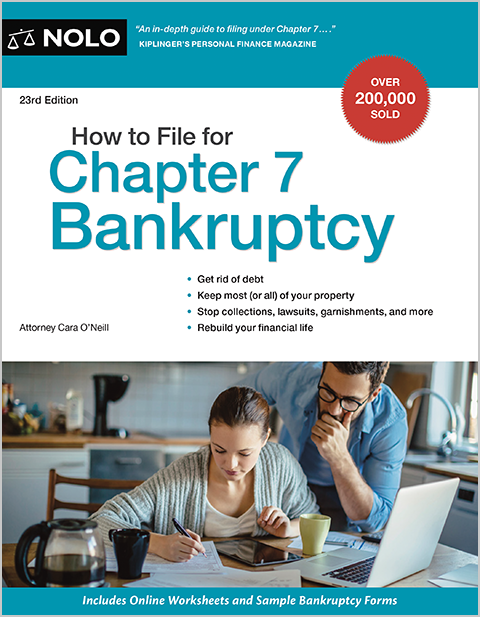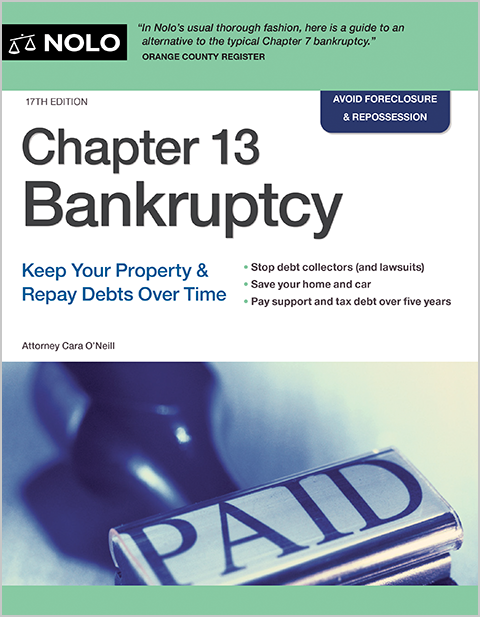If you file for bankruptcy in Montana, the homestead exemption protects a substantial amount of equity in your home.
If you're considering filing for bankruptcy in Montana, the Montana homestead exemption will help you protect the equity in your home. This article explains how much the Montana homestead exemption is and how to apply it in your bankruptcy case when you want to keep your house.
How Much Is the Homestead Exemption in a Montana Bankruptcy?
You'll use Montana's state homestead exemption, because although some states allow residents to choose between state and federal bankruptcy exemptions, the federal exemptions aren't available. To help you make an informed choice, we've listed the homestead exemption amount below and have included links to exemption lists that apply in your case.
|
Montana Homestead Exemption |
|
|
Homestead exemption amount |
$409,450 |
|
Can spouses who file a joint bankruptcy double the exemption? |
Yes |
|
Homestead exemption law |
|
|
Other information |
Protects up to 320 acres (more below); per law, the exemption was $350,000 in 2021, increasing 4% yearly. |
|
Where you'll find other exemptions |
Protecting Property With the Montana Homestead Exemption
Montana has one of the more generous exemptions. You can protect up to $409,450 of equity in a residence, including your home, condominium, or any other dwelling and appurtenances. The property can be up to 320 farm acres, a quarter of city acreage, or one residential acre outside a municipality. The homestead exemption also applies to sale, condemnation, and insurance proceeds for up to 18 months after the sale, condemnation, or loss.
Other Requirements for Keeping a Home in Bankruptcy
If you can't protect all of your home equity, you might not be able to keep your home. Typically, the Chapter 7 trustee appointed to your case would sell the house, return the exemption amount to you, pay off the mortgage, and pay creditors with the amount remaining after deducting the trustee's fee.
In Chapter 13, the trustee doesn't sell property, so you could keep it. However, that doesn't mean Chapter 13 filers get a break regarding how much equity they can retain. Instead, you'd need to pay creditors the value of the nonexempt equity through the Chapter 13 plan.
But that isn't all. Keeping your home requires being current on the mortgage when filing for Chapter 7. Otherwise, you could lose it to the lender through foreclosure, possibly even during the Chapter 7 case. If you're behind on payments when filing for Chapter 13, you have an option not available in Chapter 7. You can catch up on the payments over time through the plan.
Learn about other requirements you must meet in Your Home in Chapter 7 and Your Home in Chapter 13. Also, find out why filing for Chapter 13 is better than Chapter 7 when you're behind on payments and don't want to lose your house.
Claiming the Montana Bankruptcy Homestead Exemption
In Montana, you must file a homestead declaration (a form filed with the county recorder's office to put on record your right to a homestead exemption) before you file for bankruptcy to claim the homestead exemption. Contact your county recorder for information on how to file a homestead declaration. Check for the form on Montana's State website.
When completing your bankruptcy forms, you'll do the following:
- disclose your home on Schedule A/B: Property
- list your home and the homestead exemption law on Schedule C: The Property You Claim as Exempt, and
- if filing for Chapter 7, explain whether you plan to keep or surrender the home on the Statement of Intention for Individuals Filing Under Chapter 7.
Because your home is likely your most valuable asset, consider consulting with a bankruptcy lawyer to ensure you can protect it in bankruptcy.
Where to Find the Homestead Exemption Statute
You'll find Montana's homestead exemption on the Montana Legislature website in Mont. Code Ann. §§ 70-32-104; 25-13-615. Still, the best way to learn the current homestead exemption amount and ensure that you protect all assets is by consulting with a local bankruptcy lawyer.
When You Can Use Bankruptcy Exemptions
You can file for bankruptcy in Montana after living there for over 180 days. However, you must live in Montana for at least 730 days before filing to use the current state's exemptions. Otherwise, you'd use the previous state's exemptions.
If you lived in multiple states during the two years before filing for bankruptcy, you'd use the exemptions of the state you lived in for the majority of the 180 days before the two years immediately preceding your filing. (11 U.S.C. § 522(b)(3)(A).)
Also, you must own your home in the exemption state for at least 40 months before bankruptcy to avoid the homestead exemption being capped by federal law at $214,000 (amount adjusts on April 1, 2028). Homestead exemption use is also precluded when a filer engages in certain felonious or fraudulent acts. (11 USC §§ 522(p), (q).)
Learn more about filing for bankruptcy after moving to a new state and timing your bankruptcy case. Also, spouses can double some exemption amounts if both parties own the property, but not all of them. Learn about other filing considerations for spouses.
Need More Bankruptcy Help?
Did you know Nolo has made the law accessible for over fifty years? It's true, and we wholeheartedly encourage research and learning. You can find many more helpful bankruptcy articles on Nolo's bankruptcy homepage. Information needed to complete the official downloadable bankruptcy forms is on the Department of Justice U.S. Trustee Program website.
However, online articles and resources can't address all bankruptcy issues and aren't written with the facts of your particular case in mind. The best way to protect your assets in bankruptcy is by hiring a local bankruptcy lawyer.

